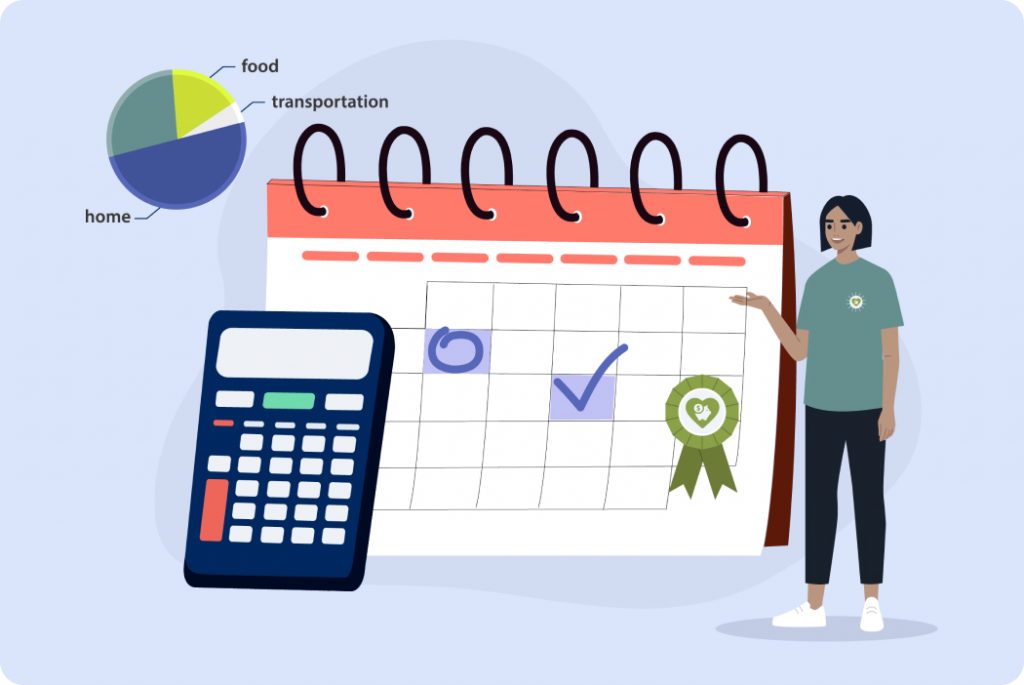Welcome to Well-being Challenge #2!

Choose one of the following three ways to improve your
financial well-being:
a savings account.
Track your spending for one month
The first step of building a workable budget is to determine where your money is going each month. Use whatever expense tracker you’re comfortable with — whether it’s an app or a notebook and pen.
The point is to get accurate numbers and record them. Then at the end of the month, ask yourself a simple question: Are your expenses getting in the way of your financial goals?
For example, let’s say that every morning on the way to work you stop for a large cup of coffee and a doughnut, which costs around $3.75 with tax and tip. No big deal, right? But over a year’s time, that daily habit adds up to more than $1,000. If one of your financial goals is to take a vacation next year, would that $1,000 make a difference? When you know where your money is going, you can be intentional about redirecting it to align with your goals.
Set up an automatic transfer from your checking account to a savings account.
Then forget about it. That’s the beauty of an automatic transfer. You’re not tempted to spend it because the money is in your savings account before you even have a chance to think about it. When saving requires us to act, it’s far less likely to happen. We’re busy. We procrastinate. Money is a little tight this month. There are a million reasons why it doesn’t get done. But when it’s automatic, it just quietly builds until suddenly, you’ve got a nice little sum for emergencies, a vacation or another financial goal
Increase your Costco retirement account contribution by 1%.
It may not seem like much, but a 1% increase in your contribution can make a surprising difference to your Costco retirement account. With Costco matching your increased contribution and decades of compound interest accruing steadily, that 1% increase can have a big impact on your future financial stability.

